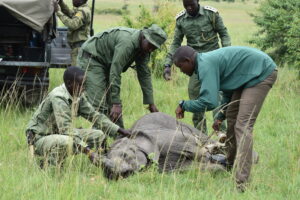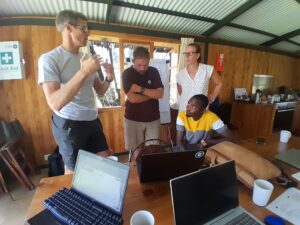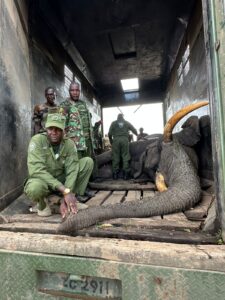High levels of illegal habitat destruction activities and bushmeat poaching continue to threaten the Mara’s wildlife and habitat as communities struggle to find alternative livelihoods as the tourism industry recovers. In response, Mara Elephant Project held a ranger recruitment and selected 10 new recruits that are now participating in basic training on MEP’s campus. These new rangers will be deployed in the Loita area, alongside a MEP team already operating in the Loita Forest to protect the communities from increasing conflict and deter illegal wildlife poaching and habitat destruction activities in the Loita Forest.
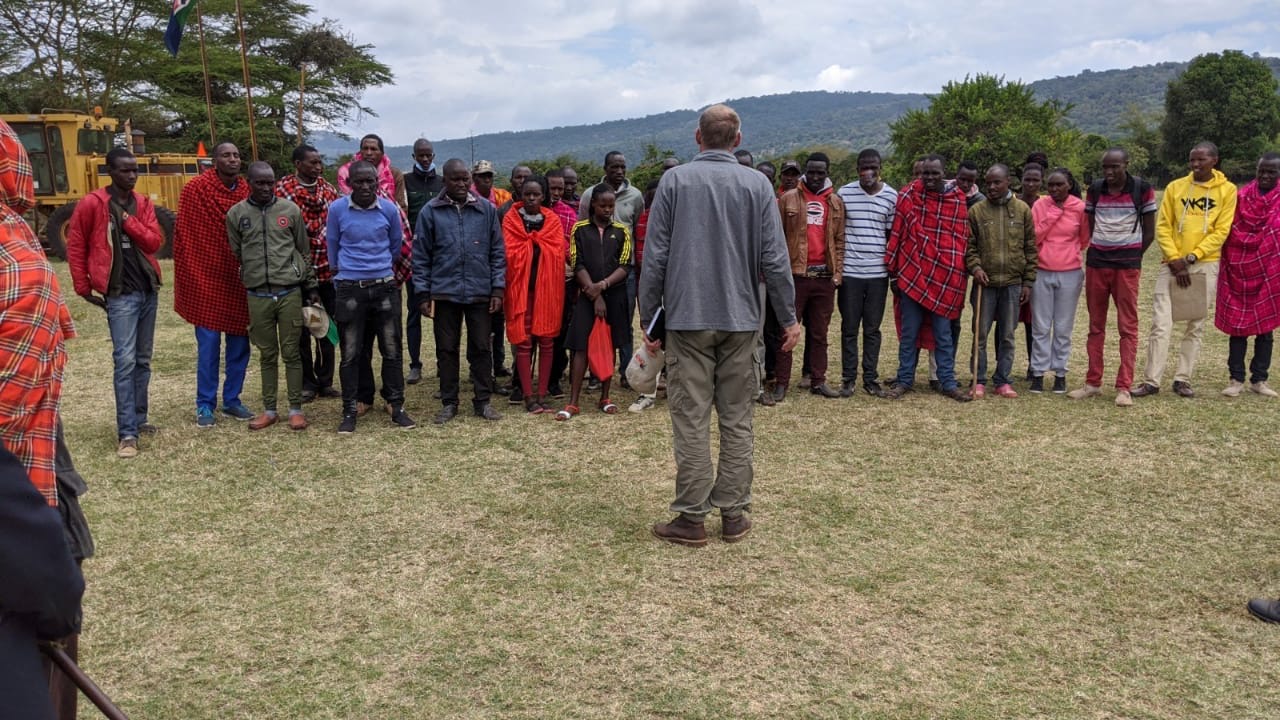 MEP CEO Marc Goss addressing everyone who came out for recruitment.
MEP CEO Marc Goss addressing everyone who came out for recruitment.
In addition to more boots on the ground in this area, Kenya Wildlife Service (KWS) and MEP conducted a collaring operation in September to collect more data on elephant movements here. In the south-eastern portion of the Mara ecosystem, the Sand River area that connects Loita to the Maasai Mara National Reserve is an important source of surface water for elephants and all wildlife and provides a critical corridor for them to move into the Loita Forest during times of drought. The river is also key for the surrounding communities who use it as a source of water and who farm tomatoes along its banks, which leads to conflict as the people and wildlife are competing for the same resource. Previous data has shown elephant connectivity from the Mara to the Loita Forest through this area, but our goal with an additional candidate is to collect more movement data to use to help in landscape planning to maintain connectivity along this southern route. Not only that, but the elephants will also provide an early warning to conflict for MEP rangers stationed nearby. Newly collared female elephant, Harriet, joins David who was collared last month.
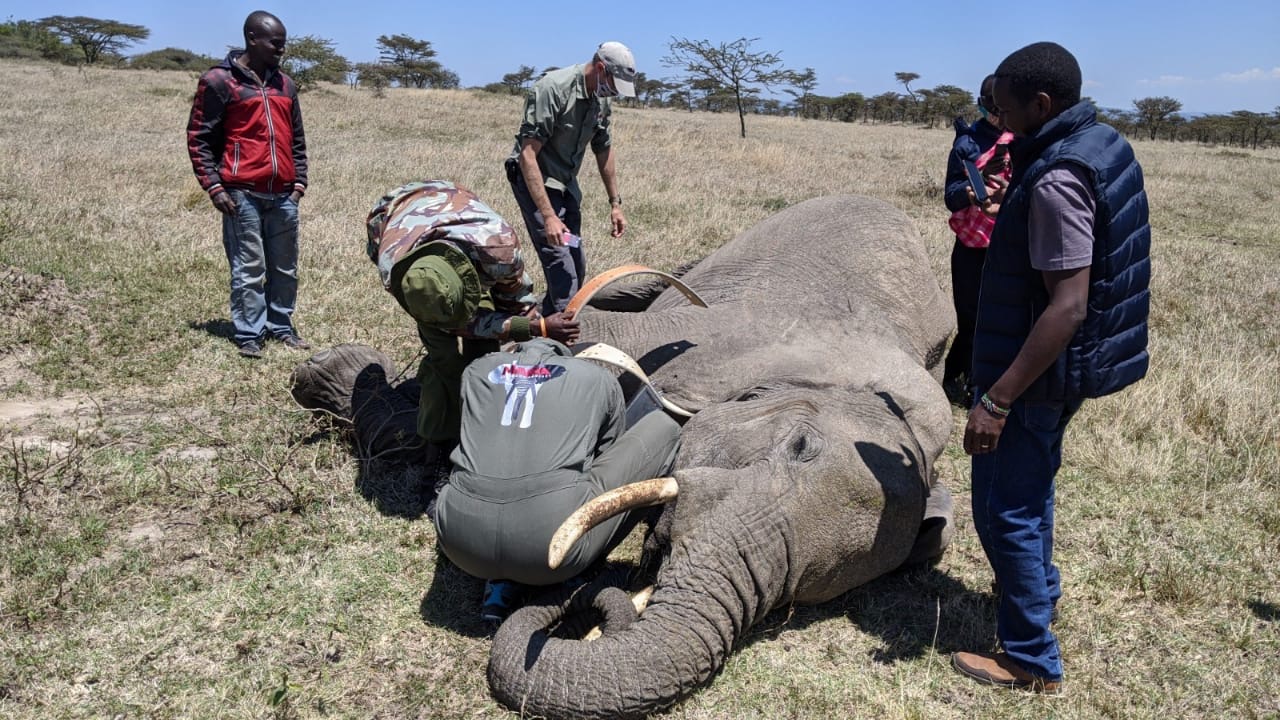 Marc and Director of Research and Conservation Dr. Jake Wall at the collaring operation.
Marc and Director of Research and Conservation Dr. Jake Wall at the collaring operation.
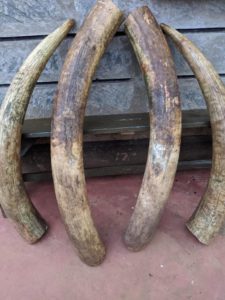 MEP’s intelligence unit continues to have great success in 2020. On September 3, KWS arrested two suspects in possession of 95 kg of ivory based on our intelligence (pictured left). The suspects were intercepted north of Karatina near the Mt. Kenya Forest boundary. In total, in September, one suspect was arrested for bushmeat poaching and 147 snares were removed. MEP’s Mau Forest De-Snaring Unit sponsored by the Sheldrick Wildlife Trust (SWT) continues to make an impact in protecting the critically important Mau Forest. In September, the “Charlie” SWT Mau De-Snaring Unit was busy and in one week alone removed over 60 snares in their area of operation. Additionally, MEP’s “Alpha” ranger team stationed in the Nyakweri Forest arrested one suspect with over 60 snares and ½ kilogram of bushmeat in a joint operation with KWS, Mara North Conservancy and Olosukut Conservancy rangers. The suspect was operating with five others and after some interrogation MEP found out they had set additional snares the previous evening, which informed MEP and KWS patrols the next day to retrieve them.
MEP’s intelligence unit continues to have great success in 2020. On September 3, KWS arrested two suspects in possession of 95 kg of ivory based on our intelligence (pictured left). The suspects were intercepted north of Karatina near the Mt. Kenya Forest boundary. In total, in September, one suspect was arrested for bushmeat poaching and 147 snares were removed. MEP’s Mau Forest De-Snaring Unit sponsored by the Sheldrick Wildlife Trust (SWT) continues to make an impact in protecting the critically important Mau Forest. In September, the “Charlie” SWT Mau De-Snaring Unit was busy and in one week alone removed over 60 snares in their area of operation. Additionally, MEP’s “Alpha” ranger team stationed in the Nyakweri Forest arrested one suspect with over 60 snares and ½ kilogram of bushmeat in a joint operation with KWS, Mara North Conservancy and Olosukut Conservancy rangers. The suspect was operating with five others and after some interrogation MEP found out they had set additional snares the previous evening, which informed MEP and KWS patrols the next day to retrieve them.
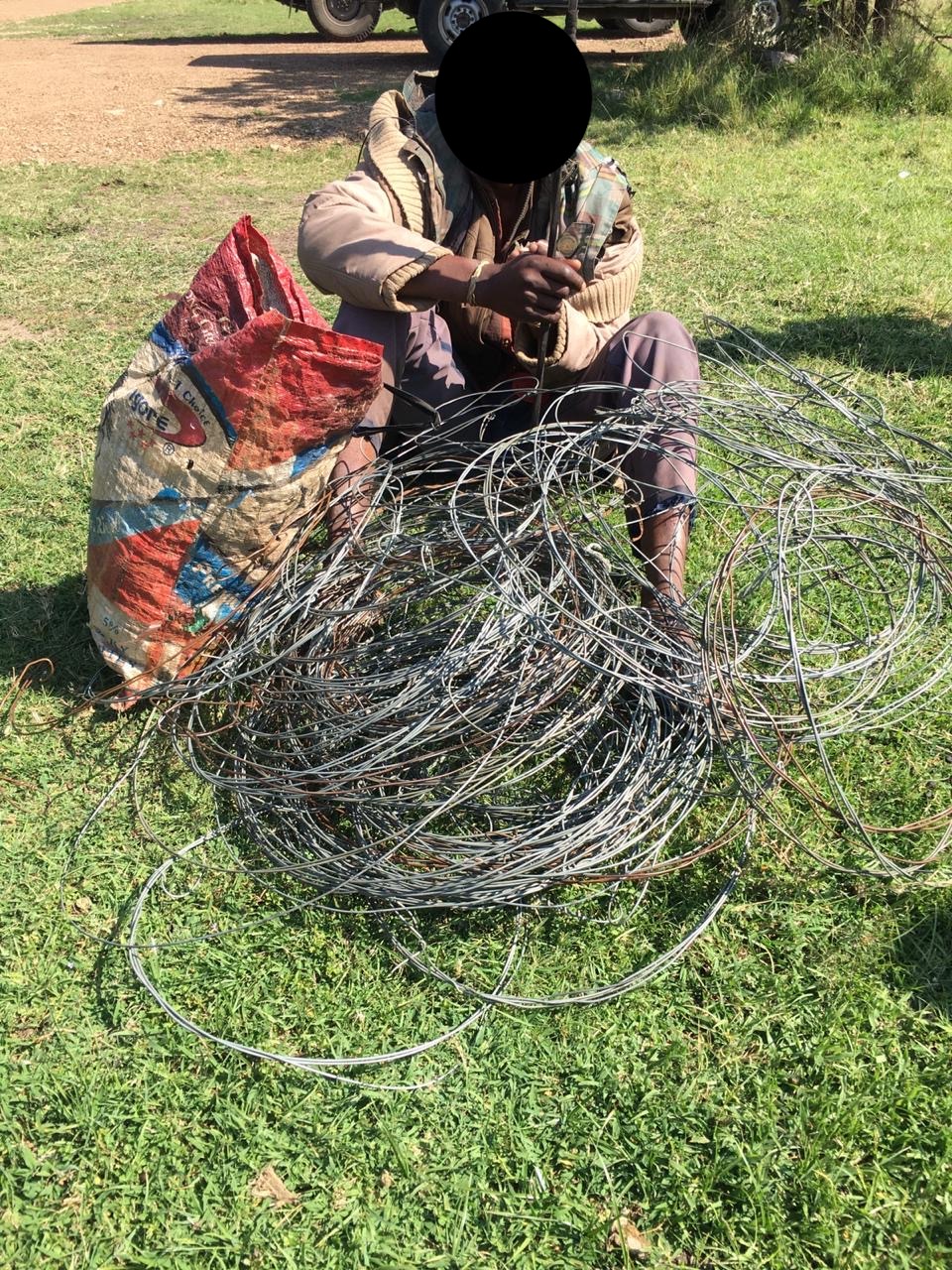
The harmful snares continue to be removed by MEP rangers.
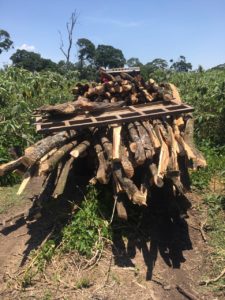 On September 26, the MEP/SWT “Echo” ranger unit stationed in the Chepsir Forest in the Kericho area of the Mau destroyed a total of 56 bags of charcoal in two separate operations. During the first operation, they discovered logs that had been illegally chopped down to make charcoal and arrested two suspects alongside our government partners. In the second operation, they discovered 17 donkeys transporting 49 sacks of charcoal out of the forest. They were able to arrest two suspects as a result of this bust. In total, in September, MEP alongside government partners arrested 35 people for habitat destruction activities, destroyed 21 kilns, 69 sacks of charcoal and confiscated three power saws, 21 trees that were cutdown, 1,652 posts and 1,089 timbers. Pictured left: 400 posts recovered on September 17 in the Transmara area.
On September 26, the MEP/SWT “Echo” ranger unit stationed in the Chepsir Forest in the Kericho area of the Mau destroyed a total of 56 bags of charcoal in two separate operations. During the first operation, they discovered logs that had been illegally chopped down to make charcoal and arrested two suspects alongside our government partners. In the second operation, they discovered 17 donkeys transporting 49 sacks of charcoal out of the forest. They were able to arrest two suspects as a result of this bust. In total, in September, MEP alongside government partners arrested 35 people for habitat destruction activities, destroyed 21 kilns, 69 sacks of charcoal and confiscated three power saws, 21 trees that were cutdown, 1,652 posts and 1,089 timbers. Pictured left: 400 posts recovered on September 17 in the Transmara area.

Donkeys carting charcoal out of the forest.
There were nine total conflict incidents MEP responded to in September. Fitz spent the month of September in the Nyakweri Forest and he and his herd have been moving into Pusanki and Kilae farms and coming back to the forest in the morning. He broke the geo-fence set up around the farms and the Alpha team based in Kawai have been responding well by moving the herd back to the forest daily. On September 28, elephants were inside community fences in the Olkuroto area of the Mara and rangers were doing their best on the ground to safely move these elephants away from the community. The Karen Blixen Camp Trust helicopter was called in to assist rangers on the ground as a last resort. The Karen Blixen Camp Trust helicopter flew a total of 35 hours in September.
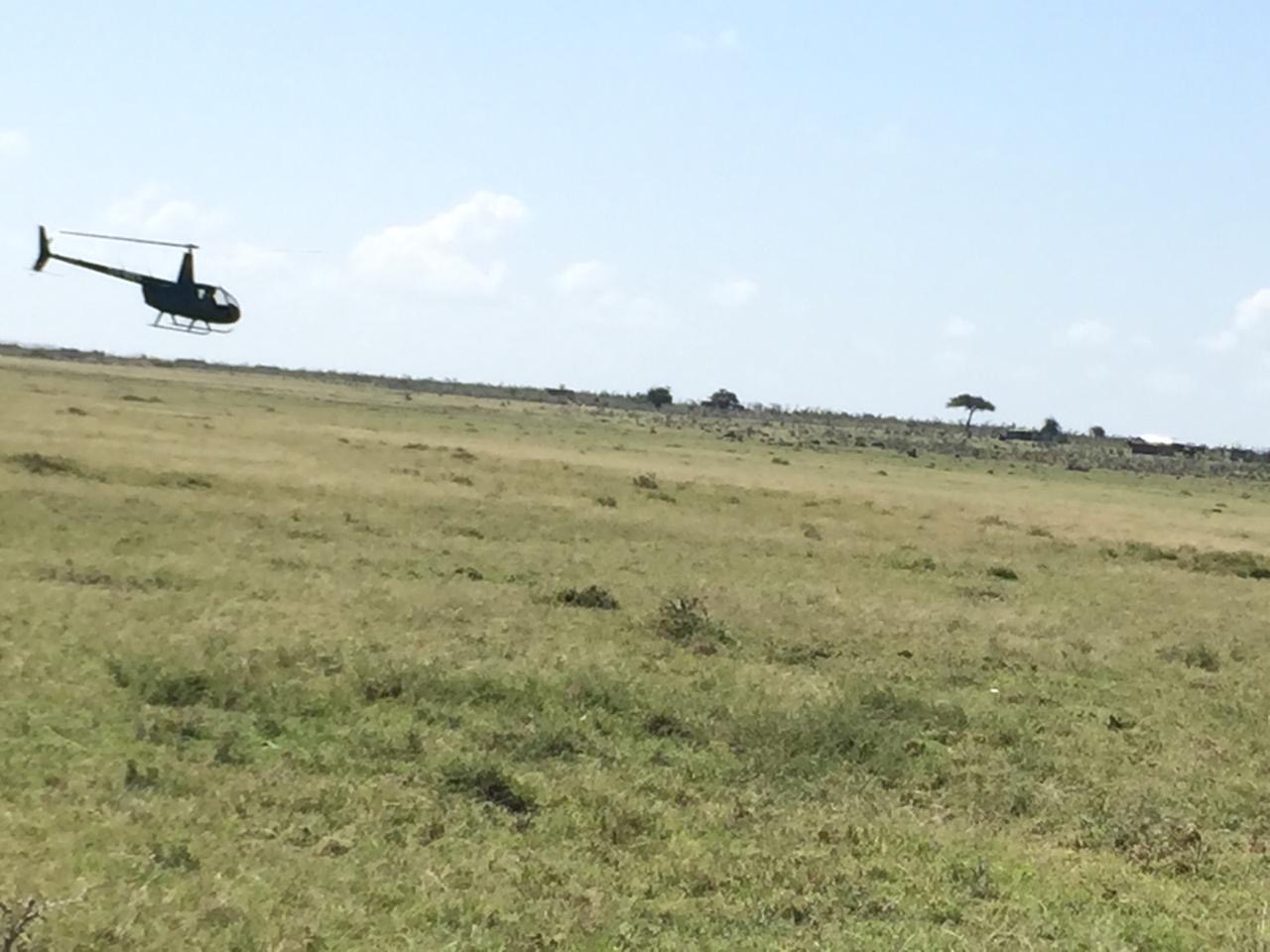
Elephants inside fences on September 28.
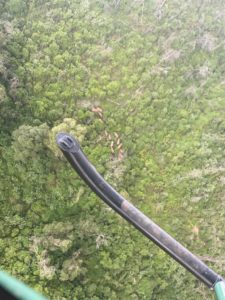 A small team of scouts managed by Kerry Outram patrol the Marmanet Forest where collared elephant Vasco, supported by the Indianapolis Zoo, resides with his herd. One of the scouts reported an injured elephant in Vasco’s herd so MEP deployed the helicopter on September 20 and brought along SWT/KWS Vet Dr. Limo in hopes of locating the injured elephant and treating him (pictured left). Using the real-time tracked location of Vasco, we located the herd but were unable to spot the injured elephant. We did note that Vasco was in good health. Unfortunately, the next day, one of the scouts reported a dead elephant and it was determined the cause of death was unknown reasons; however, we suspect it may have been the injured elephant reported previously that was involved in conflict.
A small team of scouts managed by Kerry Outram patrol the Marmanet Forest where collared elephant Vasco, supported by the Indianapolis Zoo, resides with his herd. One of the scouts reported an injured elephant in Vasco’s herd so MEP deployed the helicopter on September 20 and brought along SWT/KWS Vet Dr. Limo in hopes of locating the injured elephant and treating him (pictured left). Using the real-time tracked location of Vasco, we located the herd but were unable to spot the injured elephant. We did note that Vasco was in good health. Unfortunately, the next day, one of the scouts reported a dead elephant and it was determined the cause of death was unknown reasons; however, we suspect it may have been the injured elephant reported previously that was involved in conflict.
MEP Monthly Report September 2020
The MEP Research Department’s field assistants continued with fence mapping in September and added a new field assistant/motorbike to our team. The three mapped a combined 355 km of fences (126.9 electrical, 221.4 wire and 7.1 other) over the course of the month. Knowing where fences are helps us both from an operational standpoint in being able to help mitigate conflict but also in analyzing these data to better understand how elephants are being impacted by the proliferation of new fencing across the Mara.
 The tracks from three field assistants mapping fencing in the Mara in September.
The tracks from three field assistants mapping fencing in the Mara in September.
MEP had 30 entries in September in The Greatest Maasai Mara photo competition that benefited us. Thank you to everyone for your extraordinary photos and support of MEP. There are also three active auctions for prints that benefit MEP. Klaus Tiedge Fine Art Photography supported MEP in September with 20% of their sales going back to the organization. Klaus was a world class wildlife photographer and made the very important connection between his craft and the need for supporting the conservation of wildlife and wild places. We very much appreciate their support. We were also very happy to receive $5,500 of Google Cloud Credits this month from the Google Earth Outreach team. We’re using the cloud credits to run analysis code in the Google Cloud to better understand how and why elephants use the space available to them in the Mara. Our analysis approach requires very fast CPUs and lots of computer memory – something Google is very good at, and the cloud platform will help our analysis immensely.
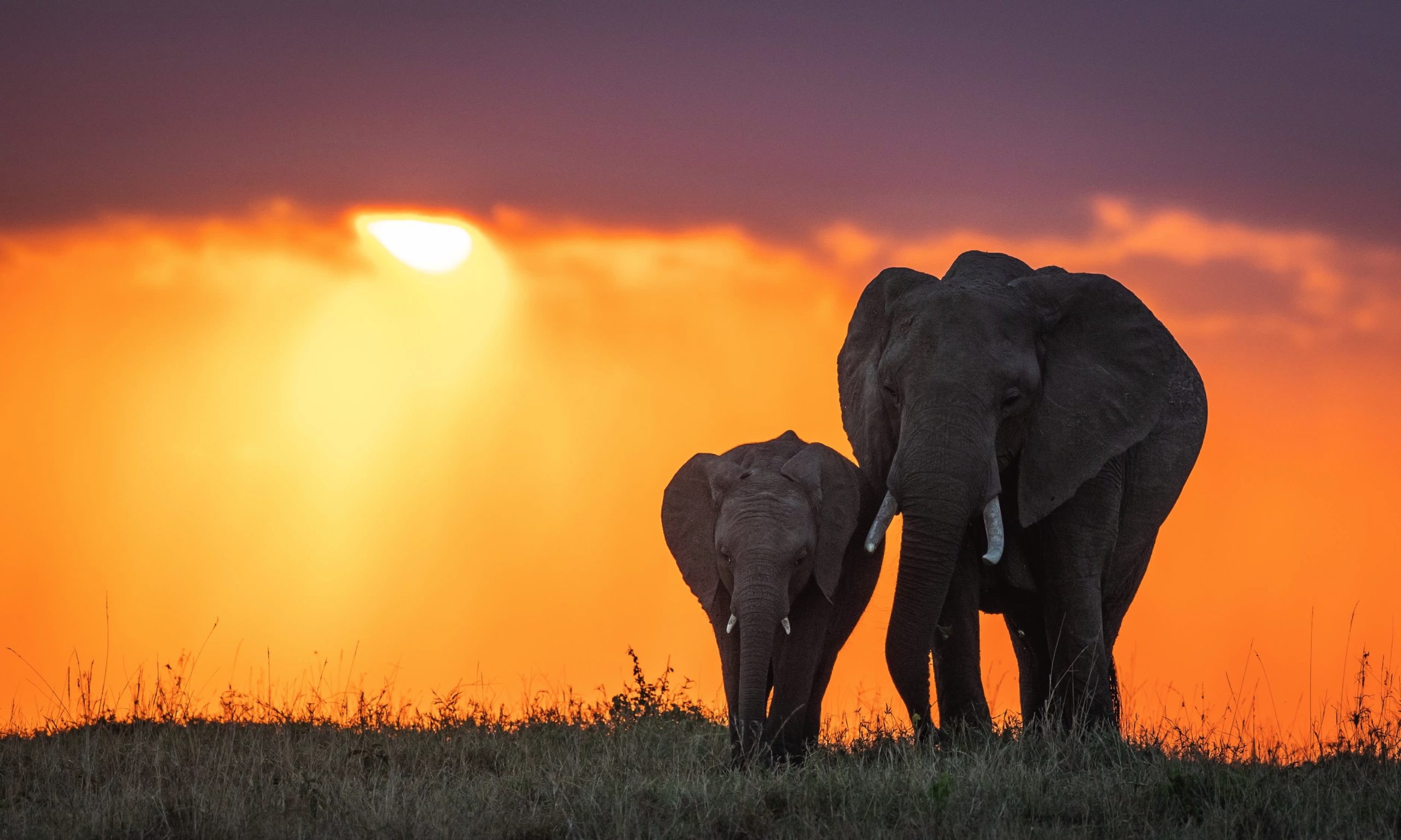
A September entry in the GMM photo competition by Paras Chandaria.
Finally, in September, MEP had the pleasure of hosting Kenyan artist Nyashinski for two days in September alongside MEP Trustee Moses Kamau. He was visiting the Maasai Mara with Uvumbuzi Africa and Sauti Za Conservation to promote youth involvement in the protection of Kenya’s iconic wildlife and habitat. This fits well into MEP’s approach, as most of our rangers are Kenyan youth that are actively protecting national assets like wildlife, communities and habitat. Nyashinski was able to meet MEP rangers stationed in Nyakweri Forest, an important area of protection for MEP, and visit MEP HQ to learn more about the activities the organization is undertaking to encourage youth involvement in protection of elephants and habitat. Nyashinski initiated many round table discussions with MEP rangers about engaging Kenyan youth in conservation and he plans to stay involved with the work we’re doing to promote that. Thank you to Nyashinski, Uvumbuzi Africa and Sauti Za Conservation for making this possible.
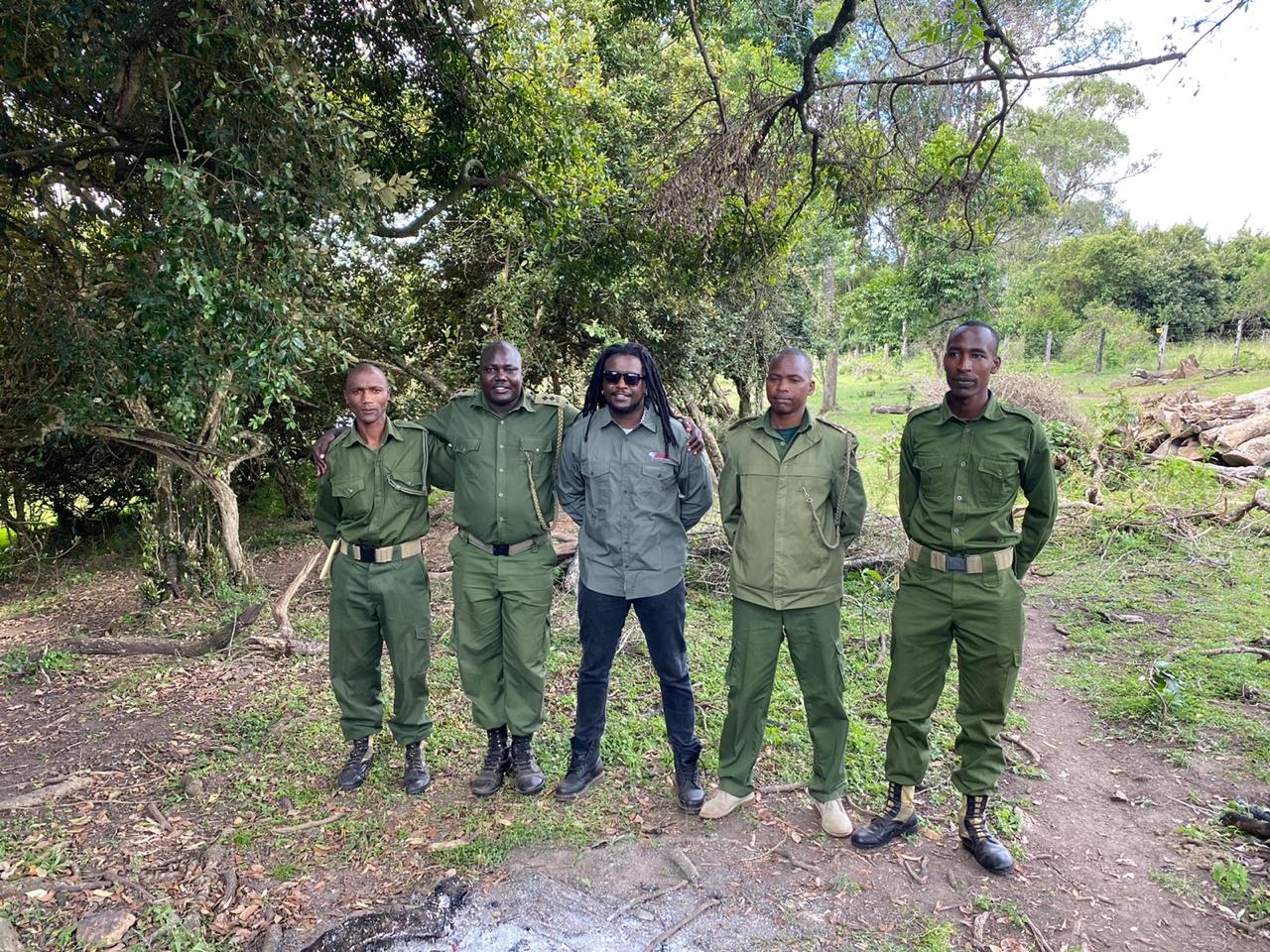
Nyashinski photographed with MEP rangers while visiting.
